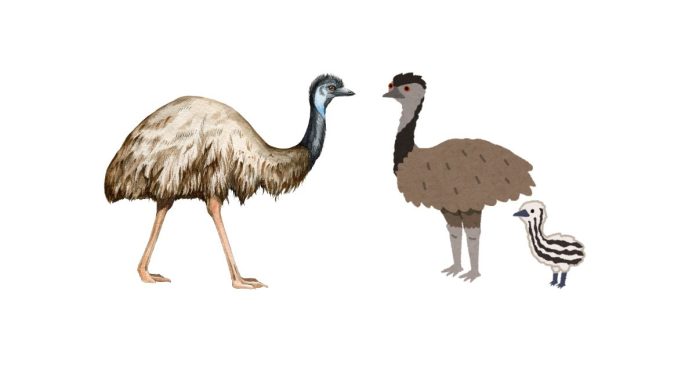Emus, the large, flightless birds native to Australia, are fascinating creatures with unique behaviors. One of the most interesting aspects of their lives is how they interact with others in their species. So, how many emus are typically found in a group? The answer is not as straightforward as it may seem, as emus’ social structures can vary depending on factors like the environment, the time of year, and the availability of food and resources. Let’s dive into the social behavior of emus and explore how they live in groups.
Emu Social Structure: A Mostly Solitary Bird
Unlike some other species that form tightly-knit, permanent social groups, emus tend to be more solitary creatures. In the wild, they do not form large, cohesive flocks like many other birds. Instead, emus are typically seen alone or in small groups, which might consist of a few individuals. These groups are generally formed by related individuals or those that have come together to forage in areas where food is abundant.
Group Size: Varies by Context
When emus do come together in groups, the size can vary significantly. During non-breeding seasons, emus may form loose aggregations of up to 20 or 30 individuals, especially if there is plenty of food available. These temporary groups are often more fluid and don’t have a strong social structure beyond the fact that they are in the same area.
However, during the breeding season, emu groups become even more dynamic. Males and females may come together to mate, and the male emu will often take on the responsibility of incubating the eggs and protecting the young. During this time, emus may temporarily gather in larger groups, but the group sizes usually remain relatively small compared to the flocks of other bird species.
The Role of Mating and Parenting
One of the most interesting social behaviors of emus is their unique approach to parenting. Unlike many species where both parents share in the care of the young, emu males take on a much larger role in raising the offspring. After mating, the female will lay eggs, and the male will incubate them for about 8 weeks. During this time, the male stays on the nest, rarely leaving to eat or drink. Once the eggs hatch, the male will protect the chicks and guide them through their early development.
This solitary parenting style means that emus don’t form long-term family groups like some other animals. After the chicks are old enough, they typically leave the male and go off to live independently.
Emu Behavior in Groups
When emus do group together, whether for foraging or during migration, they often display fascinating behaviors. They are generally non-aggressive, though they will compete for resources if necessary. The group dynamics tend to be peaceful, with emus communicating with each other using various vocalizations, body postures, and displays. While they don’t have a strict hierarchical social structure, the presence of a dominant male during the breeding season can influence the group’s interactions.
Environmental Factors and Grouping Behavior
The size and behavior of emu groups are often influenced by environmental factors. In areas with abundant resources and good weather, emus may form larger groups. Conversely, during droughts or in harsh environments, emus may split up to search for food more efficiently. This adaptability allows them to thrive in a variety of conditions across Australia’s diverse landscapes.
In summary, while emus are not typically known for forming large, permanent groups like some other species, they do come together in smaller, more fluid gatherings, especially during non-breeding seasons or when resources are plentiful. The number of emus in a group can range from just a few individuals to several dozen, depending on the circumstances. These groups are often temporary and lack the strong social bonds seen in more communal species. Whether alone or in groups, emus are fascinating creatures with unique behaviors that make them a key part of Australia’s wildlife.


